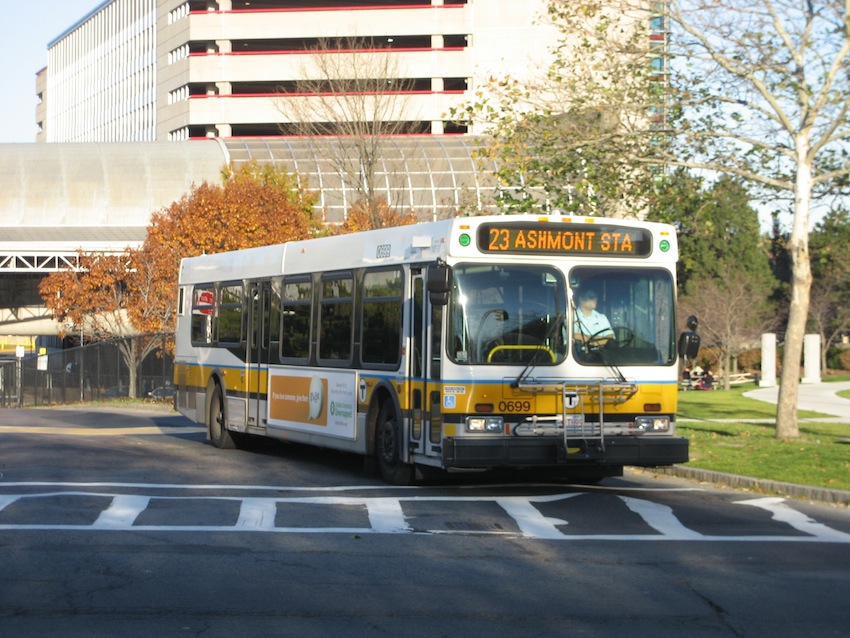Dude, Where’s My Bus Stop?

Photo via Wikimedia.com
It took a little bit longer than expected, but slowly, officials from the MBTA eliminated some bus stops along more than a dozen of the busiest routes in the system.
But the transition, which included moving stops, lengthening others, and ditching a few altogether—a switch that was meant to be seamless—didn’t go quite as smoothly as planned. “We understand that eliminating stops can be difficult,” said T spokesperson Kelly Smith.
Smith said the T has received some complaints, but they have been handled accordingly.
In the weeks since the “Key Bus Route” project rolled out, some riders that didn’t get the memo about the changes—despite the MBTA’s “aggressive,” months-long campaign using social media, making announcements online, holding more than 50 public meetings, and posting signs at stops— found themselves asking “where is my bus?”
@mbta you move all the stops 10 feet to be "more efficient" & yet every day I wait 20+ minutes for a 66 bus no matter what time/direction
— taylorgang, pharmd (@taylorepatten) September 19, 2013
https://twitter.com/LifeLesson617/status/380030310203023360
https://twitter.com/Emmy_S/status/380287905576808448
Despite the recent miscommunications with riders baffled by the sudden changes, many of which are students returning to the city, the T expects the upgrade to be worth it. “We tried to be cognizant of what was around and how often the stop is used. Anything we did eliminating or moving a stop was done to improve the bus route,” Smith said. “Like anything, we try our best to inform our customers and keep them informed of any changes.”
The Key Bus Route project was supposed to be finished on September 1, but has lasted halfway through the month, said Smith. The goal of the project, funded through federal grants, is meant to make the 15-selected routes 10 to 15 percent more efficient, as well as more accessible. Many stops along the bus routes, which include vehicles traveling through Cambridge, Allston, Arlington, Revere, Watertown, and Belmont (a full list can be found here), were 200 feet apart, causing traffic congestion at red lights, and slowing down arrivals times based on frequent stops.
The changes also brought roughly 85 “shelters” to stops so that people would have a place to stand, avoiding the rain or cold, while waiting for a vehicle to arrive, and making stops ADA compliant.


